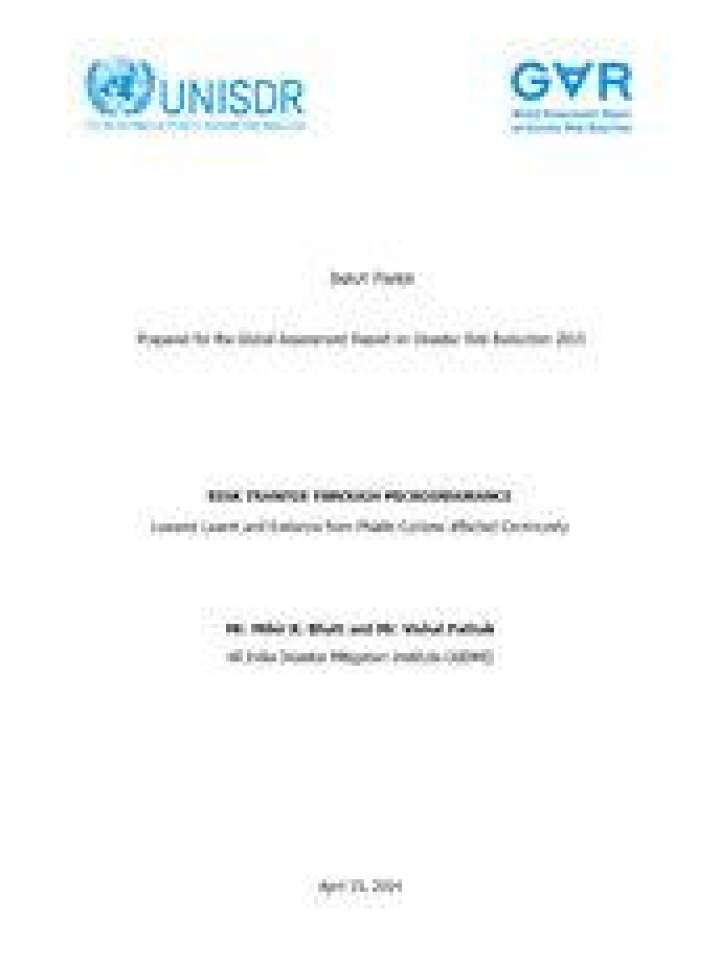Risk transfer through microinsurance: Lessons learnt and evidence from Phailin Cyclone affected community
This paper seeks to provide evidence for policy-makers and practitioners to promote and strengthen disaster insurance for vulnerable areas of India and other developing countries. The document explains how the provision of low premium microinsurance policies makes insurance accessible to the majority of society's poorest victims. The case of Cyclone Phailin is discussed in relation to the effectiveness of microinsurance and the relevant scheme Afat Vimo.
The lessons learned regarding risk transfer are the following:
- Demand exists for disaster microinsurance but it is not yet clear if potential clients are willing to pay a premium that covers all administrative costs without direct or indirect subsidies.
- Pro-poor financial risk transfer initiatives combined with risk reduction measures remain rare in the South Asian region.
- Convergence of interest and attention of academicians, researchers, policy makers, donors and risk management practitioners along with victim communities is necessary.
- To be viable, risk transfer products need to be appropriately designed and piloting and up-scaling is a long process that requires dedicated local institutions.
- The Afat Vimo scheme has tremendous potential for expansion.
- Micro-finance organisations and civil society partners may consider bundling existing credit or other financial services with microinsurance to hedge default risk and extend risk transfer to wider groups of the poor.
This document is an input paper of the 2015 Global Assessment Report on Disaster Risk Reduction.
Explore further
Hazards
Cyclone, Hurricane and Typhoon
Themes
Insurance and risk transfer
Country and region
India
